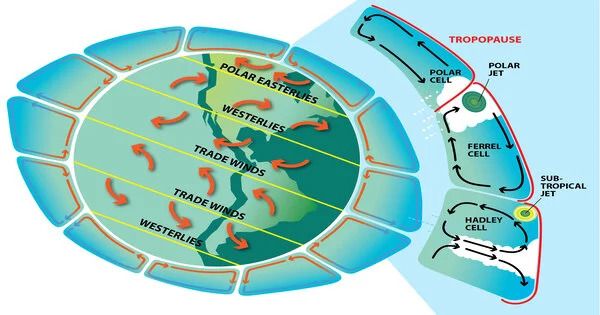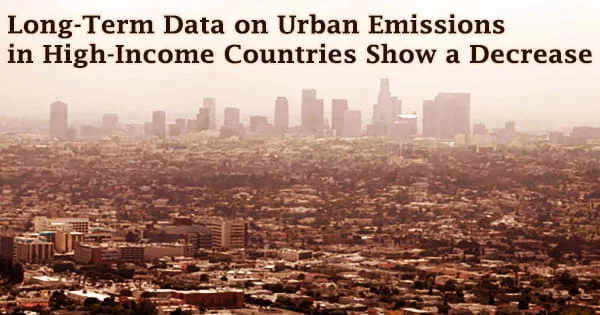Atmospheric circulation refers to the large-scale flow of air across the Earth caused by temperature and pressure variations. It is the large-scale movement of air that, along with ocean circulation, is responsible for the redistribution of heat energy on Earth’s surface. The Earth’s atmospheric circulation fluctuates from year to year, although the large-scale structure of the circulation is rather consistent.
Smaller-scale weather phenomena, such as mid-latitude depressions or tropical convective cells, arise chaotically, and long-term weather predictions for them are impossible to make beyond ten days in fact or a month in principle. This circulation is critical for transferring heat and moisture over the globe, altering weather patterns and climate.
The weather on Earth is determined by the Sun’s light and the principles of thermodynamics. The atmospheric circulation can be considered as a heat engine powered by the Sun’s energy, with the darkness of space serving as the ultimate energy sink. The effort performed by that engine propels the masses of air, redistributing the energy collected by the Earth’s surface from the tropics to latitudes closer to the poles, and then to space.
There are several key components and features of atmospheric circulation:
- Hadley Cell: Near the equator, solar radiation is most intense, heating the air. As the warm air rises, it cools and spreads towards the poles at high altitudes, creating the Hadley Cell. This is characterized by low-pressure zones near the equator and high-pressure zones around 30° latitude.
- Ferrel Cell: This is a mid-latitude cell driven by the interaction between the Hadley and Polar cells. Air from the Hadley Cell descends around 30° latitude and moves towards the poles at the surface, but it is deflected due to the Coriolis effect, creating the westerly winds.
- Polar Cell: Near the poles, cold air descends and moves towards lower latitudes at the surface, completing the circulation cycle. This cell is characterized by high-pressure zones near the poles.
- Trade Winds: These are steady, easterly winds found in the tropics, between the equator and 30° latitude, driven by the Hadley Cell.
- Westerlies: These are prevailing winds from the west in the mid-latitudes, between 30° and 60° latitude, influenced by the Ferrel Cell.
Other important features and phenomena related to atmospheric circulation include:
- Jet Streams: Narrow bands of strong winds high in the atmosphere, primarily driven by temperature differences between air masses.
- Monsoons: Seasonal shifts in wind patterns, especially notable in South and Southeast Asia, bringing heavy rainfall during certain times of the year.
- Coriolis Effect: The rotation of the Earth causes moving air and water to be deflected to the right in the Northern Hemisphere and left in the Southern Hemisphere.
Changes in atmospheric circulation can cause differences in weather patterns and climate conditions, influencing precipitation, temperature, and storm patterns around the planet. Ocean temperatures, landmass distribution, and human activities all have the potential to impact and change atmospheric circulation patterns.
















